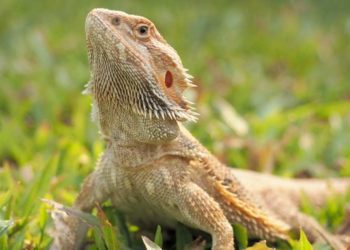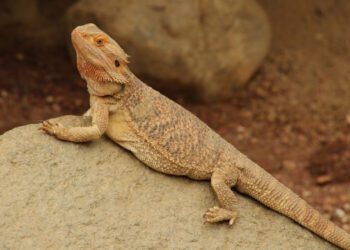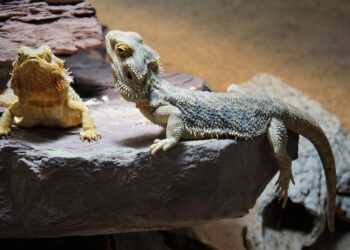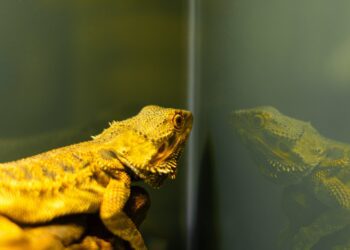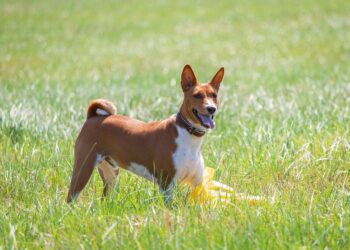Reptiles live in naturally sandy areas, and are habituated to dig the surface. They often dig the substrate for various reasons like making burrow or keeping the eggs safe. But it may make you curious why the dragon is digging on the surface of the enclosure while they do not plan to lay eggs anytime soon? Let us probe into the matter and know the proper reason of such behavior.
Bearded dragons are quite small creature and they dig with their forelegs and hind legs to do the digging. They use to dig the substrate out and create a hole in the area. If your bearded dragon is kept without the substrate then the chance may be that they will dig the bare bed of the terrarium or the flooring, and go beneath the surface.
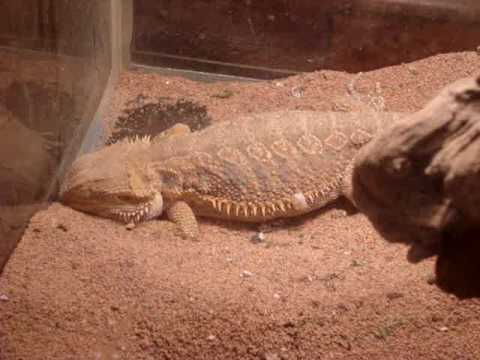
Contents
Why do bearded dragons dig?
The behaviors of most creatures are logical, but it is hard to guess that for the pet owners. Only the specialists or veterinarians can identify the behavior with the reasons. However, in case of bearded dragons, the pet owners can also be little bit more observant and can decide on the reasons of digging.
Generally it has been found that the dragons digging.
Making a good basking spot
For bearded dragons, basking is a very important part of their lifestyle. They are the natives of desert, so living a great part of the day under the scorching heat of sun is comfortable for them. You can keep the artificial heat emitter or the UV lamp in their enclosure, but they will still try to dig the sand or any other material you keep as substrate, to rest their body.
The heat and UV radiation is good for their energy level and also it helps them to digest the food. You must keep a natural basking spot in the terrarium of the dragon, which must be the warmest place in the enclosure. If you do not keep a particular basking spot under the heat radiating bulb or emitter, the dragon will make it on its own, by digging the surface area.
Laying eggs
Female dragons are genetically formed in such a way that when they are supposed to lay eggs, they dig the sand off the enclosure. This is a general practice among them as they try to hide the eggs to protect these from any other animals.
Also the eggs, when buried under the desert sands, get ample heat to be incubated. This is an instinctive gesture among the female bearded dragons. However, you must not keep them that way, and remove them to an incubator, so maximum number of eggs remains fertile.
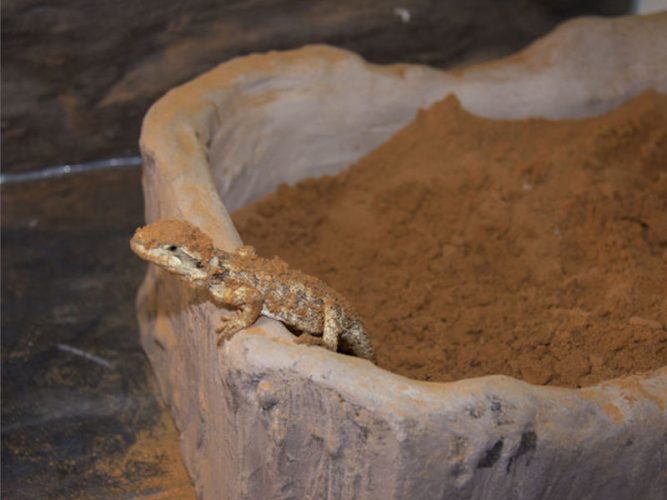
Brumation preparation
Bearded dragons prefer warm and hot weather. But when the mercury drops during the rainy or winter season, they normally feel uncomfortable.
The origination place of bearded dragon, that is Australia, is quite cold in the winter months. The dragons prefer to stay in brumation during this period of time. Now if you yet do not know what brumation is, then the idea of hibernation will also work.
Learn more about brumation of bearded dragons here.
But the difference is, bearded dragons do not sleep through the whole period of brumation like snakes does during hibernation. Rather they stay lethargic, barely moving and eating very little.
This occurs only once in year, and during this time, they stay inactive in their holes. So when the season arrives, they start digging to make a burrow on which they will lay.
Do not over think when you see your bearded dragon not moving much out of the hole they have dug on the surface, during this period. This is a natural phase which will end after a few months.
Conclusion
A bearded dragon can also feel uncomfortable in the high temperature inside the terrarium, and they may try to dig a hole, in which they can stay safe from the overheated environment. Also if something disturbs it, out of fear it starts digging, which may show its indignation and anxiety. If you are an owner, you must follow its behaviors to know the right reason for its different articulations.




